The Panasonic GX80 — known as the GX85 in North America and GX7 Mark II in Japan — is a nicely-priced and compact Micro-Four-Thirds (MFT) mirrorless hybrid camera. It features the same 16Mp MFT sensor as its predecessor, the GX7, but with the Optical Low Pass Filter (OLPF) removed, because (in theory) this produces images with greater resolution. Although a lower-resolution option compared to the $798 Panasonic’s 20Mp GX8 (including a 12-32mm kit lens), the GX80/85 looks to be a good value, with both new and borrowed features from the flagship GX8.
The GX80/85 boasts a redesigned shutter box, which Panasonic claims reduces both shutter noise and shutter shock. The new shutter mechanism also offers both a mechanical shutter, with a maximum shutter speed of 1/4000 sec, as well as an electronic mechanism, with the latter facilitating a maximum 1/16,000 sec shutter speed for high-speed photography.
The GX80/85 also features sensor-based 5-axis image stabilization, which is designed to work in conjunction with Panasonic’s lens-based OIS system. With a non-OIS lens attached, photographers benefit from the 5-axis stabilization, but with an OIS lens, the two systems work together to reduce camera shake, which is said to be of benefit when using long telephoto focal lengths. The sensor-based stabilization also works during the GX80/85’s 4K video capture, which records UHD resolution movies at 30/24fps (25fps on the US GX85 model) or full HD 1080p capture up to 50fps / 28Mbps. Serious videographers after UHD 4K video capture in a compact device may be disappointed that the GX80/85 doesn’t offer a socket for external microphone compatibility, however.
Read on for our analysis of the GX80/85’s DxOMark sensor scores.
Key Specifications:
- 16Mp MFT sensor without OLPF
- 5-axis image stabilization
- ISO 200–25,600 (expandable ISO 100–25,600)
- 3-inch tilting / touchscreen LCD
- 8fps continuous shooting
- 2.7m-dot EVF
- UHD 4K video @ 30/25/24fps
- Built-in wifi
Measurement: Comparable Micro-Four-Thirds scores
Achieving an overall DxOMark sensor score of 71 points, the GX80 posts results on par with many MFT sensors we’ve tested. Despite ranking outside the top 10 for all Olympus and Panasonic MFT sensors, the scores are very close, and the GX80/85 ranks in third place for Panasonic mirrorless cameras, behind the top-ranked 20.3Mp GX8 with 75 points, and the 16Mp GH4 with 74.
The GX80/85’s headline score of 12.6 Ev for dynamic range (landscape) is achieved at the base ISO 100 sensitivity, matching the score of the class-leading GX8. As sensitivity increases, dynamic range declines in a fairly linear fashion, offering good dynamic range over 10 EV up to ISO 1600, dropping to 6 EV at its maximum ISO 25,600 setting.
The greatest color depth (portrait) of 22.9 bits at ISO 100 is around 1/3 of a stop behind the GX8. Color depth drops to just over 20 bits at ISO 800 and then declines at a steeper rate as sensitivity is increased to around 14 bits at ISO 6400, with relatively poor color at the maximum ISO sensitivities.
The physically smaller MFT sensor and reduced pixel pitch results in weaker signal-to-noise ratios than those measured on larger sensors. An overall low-light ISO (sports) score of 662 for the GX80/85 is lower than we’ve become accustomed to on APS-C sensors, for instance. Although its low-light ISO result is slightly behind the top-ranked Panasonic MFT sensors, the scores are close, but expect to see visible noise at sensitivities over ISO 800 on all three models.
Panasonic GX80 vs. GM5 vs. GH4
The GX80 offers some advantages over the similarly diminutive Panasonic GM5, with improved results for color depth and dynamic range. Its landscape score of 12.6 EV, compared to 11.7 EV for the GM5, equates to just under 1 stop of improved dynamic range at ISO 100.
Scores between the two models narrow as sensitivity is increased, resulting in comparable results from ISO 800 onwards. The GX80/85’s advantage for color depth isn’t as great at ISO 100, with scores of 22.9 bits vs 22.1 bits providing a benefit of only around half a stop. The gap in color narrows as sensitivity is increased, too, with both models offering similar color depth at ISO 800/1600. Although the GX80/85’s color picks up a little at higher sensitivities, the results remain close. Compared to the more DSLR-styled Panasonic GH4, the bigger camera just has the edge in all sensor scores, but again, the results are very close, with little difference in real-world image quality capabilities between these cameras.
Conclusion: Nicely-priced 4K video option
The GX80/85’s compact design and good set of features, including 4K video, make it an attractive option for consumers looking for a convenient and lightweight camera. Its DxOMark sensor scores suggest that it offers very comparable image quality to other Panasonic and Olympus MFT mirrorless options, with very reasonable color and dynamic range at lower sensitivities up to ISO 800. The physically smaller MFT sensor doesn’t fare quite as well at higher sensitivities, however, with visible noise and lower dynamic range and color depth affecting image quality. If you’re after a good low-light shooter, larger mirrorless cameras featuring an APS-C sensor will bolster image quality at higher sensitivities; but for a small, lightweight, and well-priced mirrorless camera with 4K video, the GX80/85 is just the ticket.


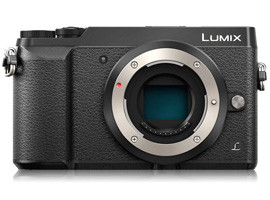



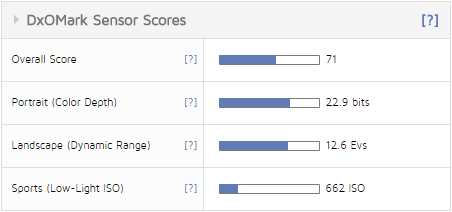



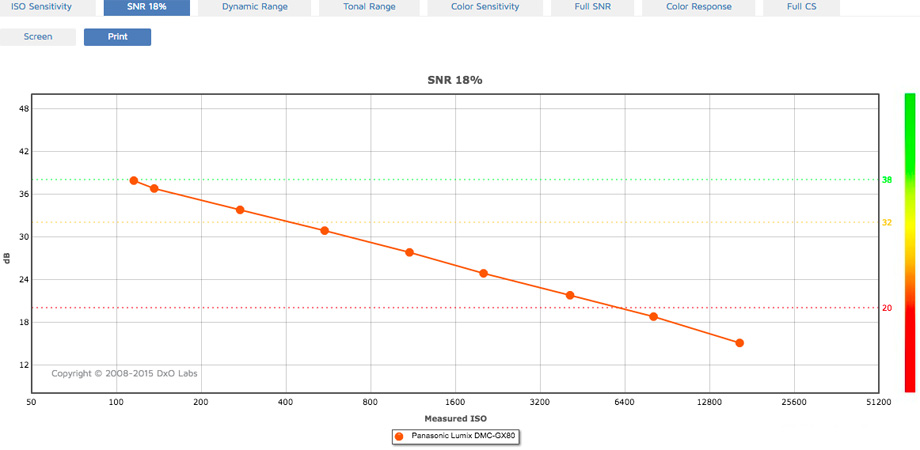

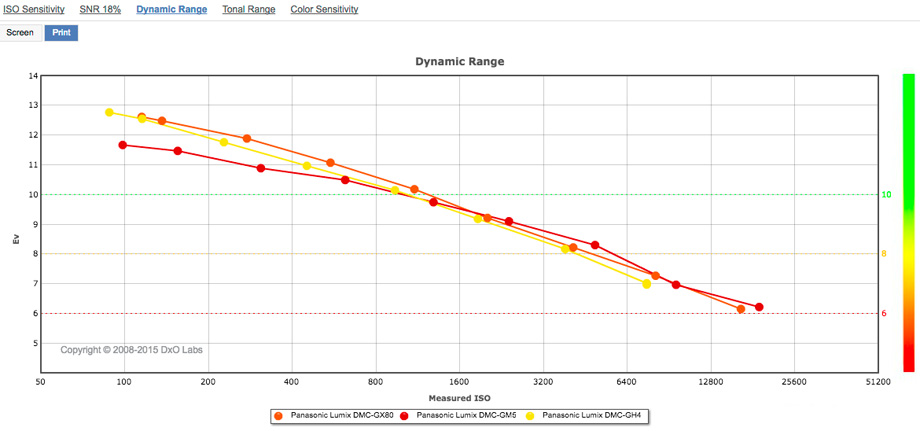
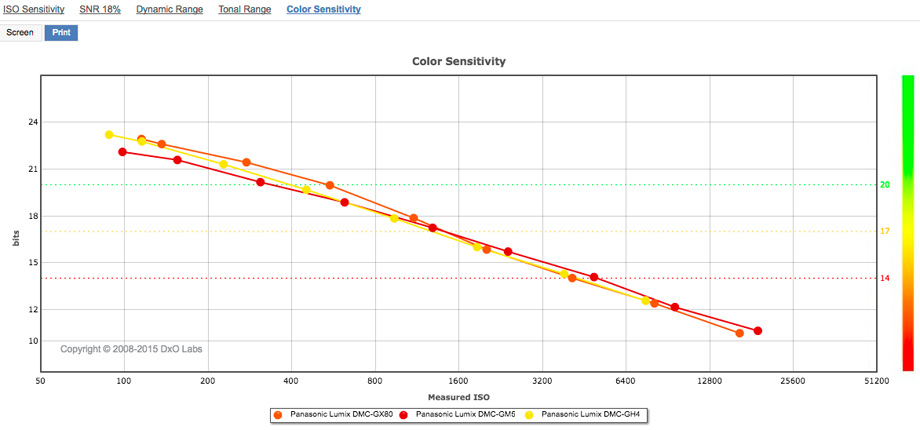
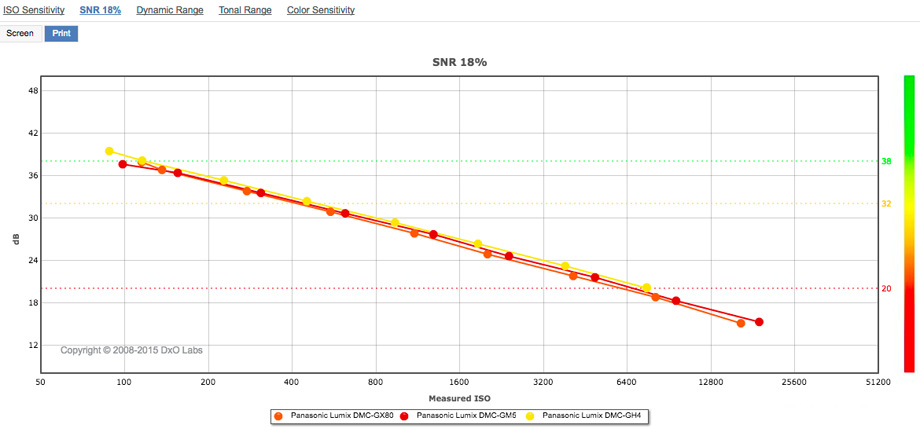
DXOMARK encourages its readers to share comments on the articles. To read or post comments, Disqus cookies are required. Change your Cookies Preferences and read more about our Comment Policy.